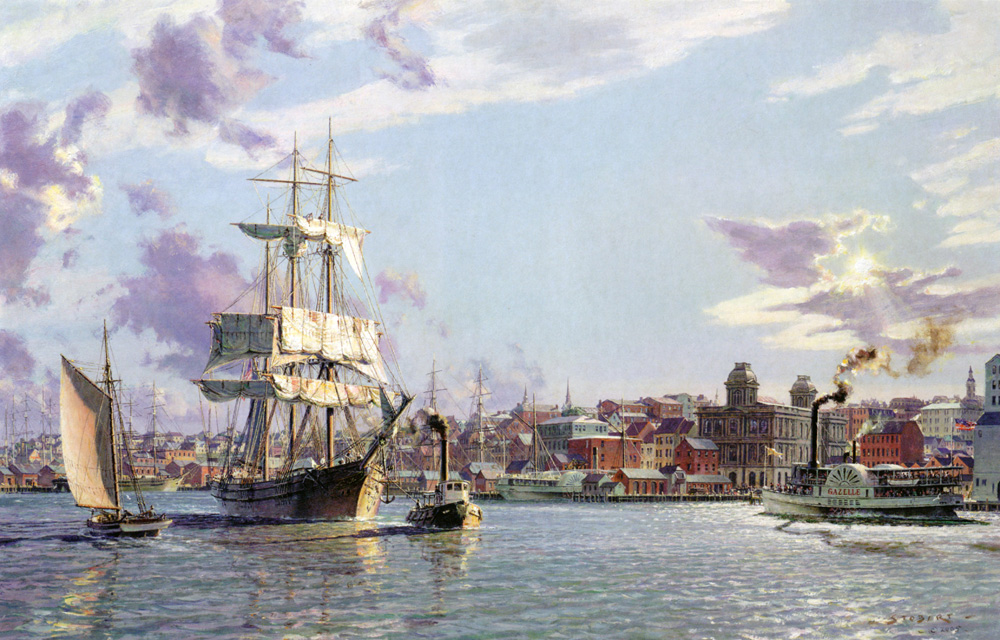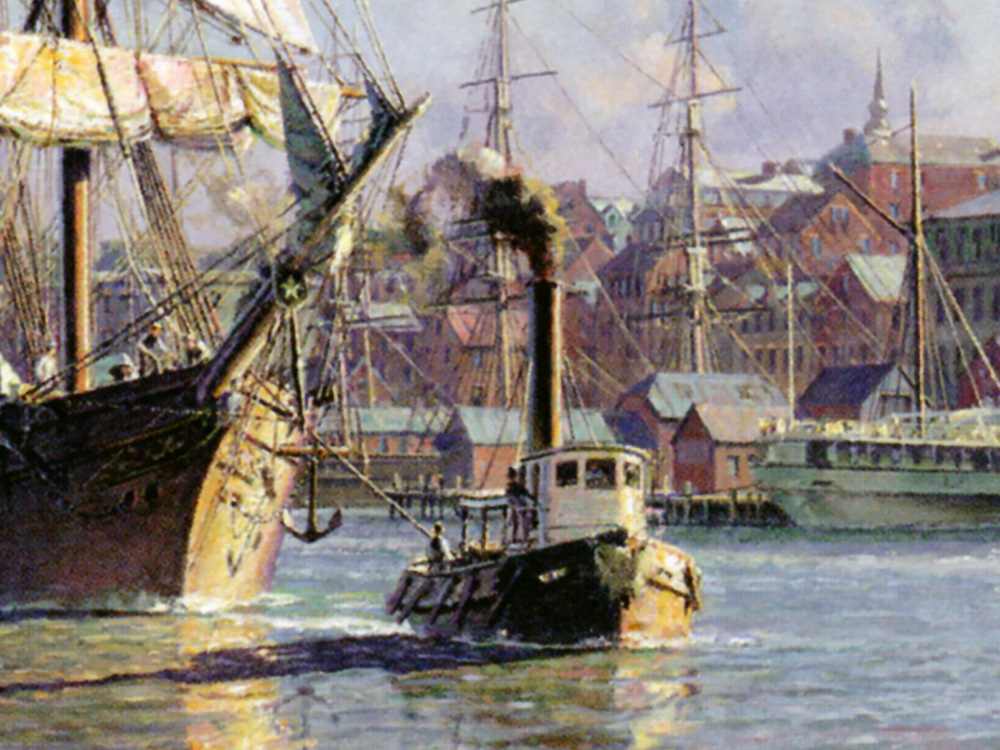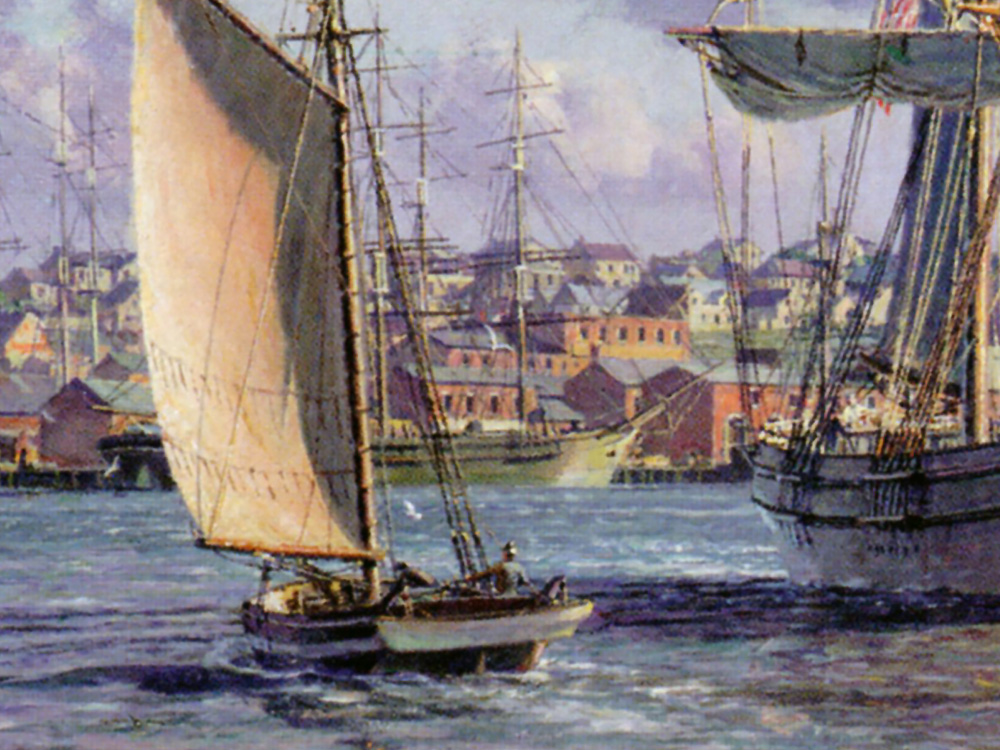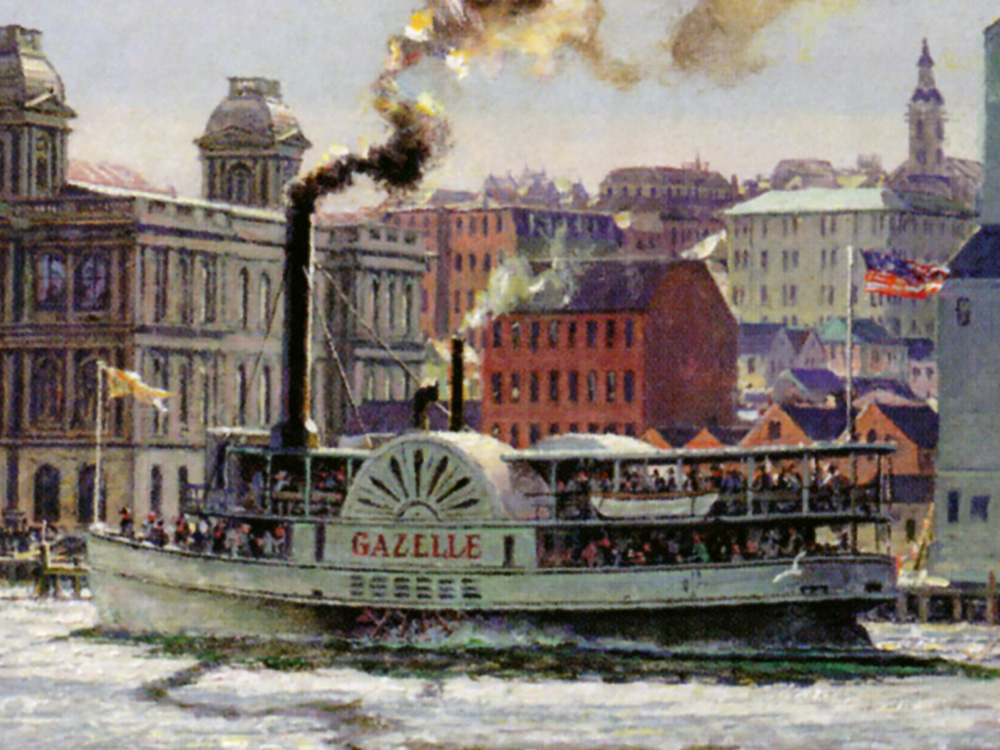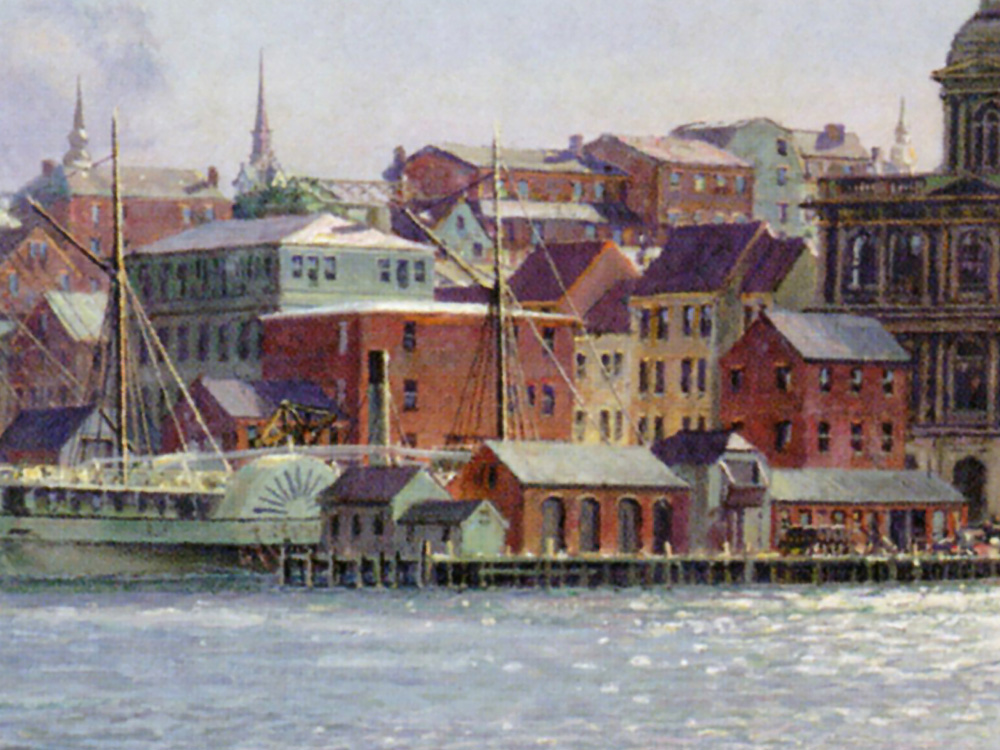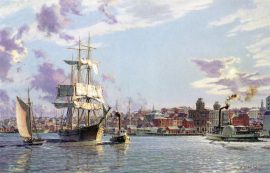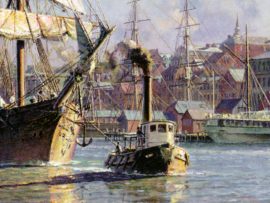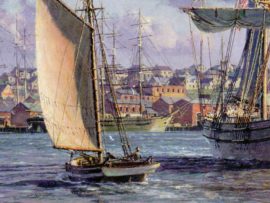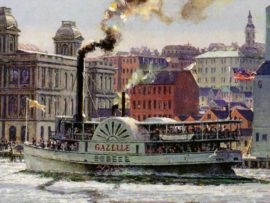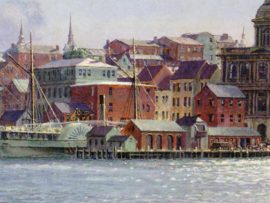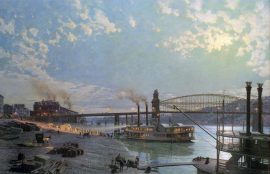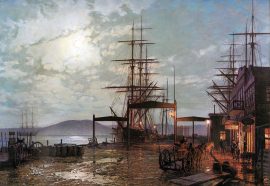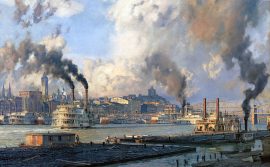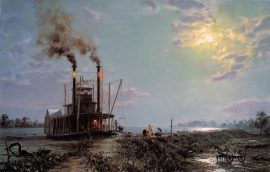Portland: The Bark “Halcyon” Towing Out Past the Customs House in 1876
$500.00
The city of Portland, Maine was founded in an era when travel of over ten miles was generally by water under sail. In viewing a map of the state’s shoreline one sees a myriad of waterways and countless ports of call to which Portland was the supply center.
Approaching the city by sea in 1876, one might have overestimated the population by thousands, for the traveler would see a similar metropolis to New York or Boston from the water with a forest of masts, dry docks, crowded shipping at the wharves and large and small passenger steamers. Portland was a very busy place; a number of steamboats arrived and left the city each day bound for Boston, as did more than 65 railroad trains. Half-weekly steamers went to New York and for more than six months of the year weekly and half-weekly ocean steamships departed, touching at points eastward along the coast of Maine and the Maritime Provinces. Portland was a transportation hub and the harbor was bustling.
Most of downtown Portland was destroyed on July 4th, 1866. by a fire that burned for two days and was the largest of such disasters to have occurred to that date. Helped by an unusual sense of pride among city fathers, the city was quickly rebuilt into a modern, up-to-date Victorian city, with a population of 35,000 by 1876. One major new building, the Customs House, was completed in 1872 at a cost of $450,000 and was regarded as one of the most substantial, convenient and elegant buildings in the United States.
This view looking southwest from mid-harbor, takes in the entire commercial waterfront at the time and features a departing “Down Easter” being assisted down harbor to open water, with an island ferry arriving at the right. As in many cases where reconstructing a bygone scene is attempted, thanks for helping me make this work a success is due to a fine “birds-eye view” of the city, left for posterity by contemporary etcher Joseph Warner.
| Weight | 6.00 lbs |
|---|---|
| Catalog: | Stobart-130 |
| Artist: | John Stobart |
| Dimensions: | 18" x 27 3/4" |
| Edition: | 550 |

